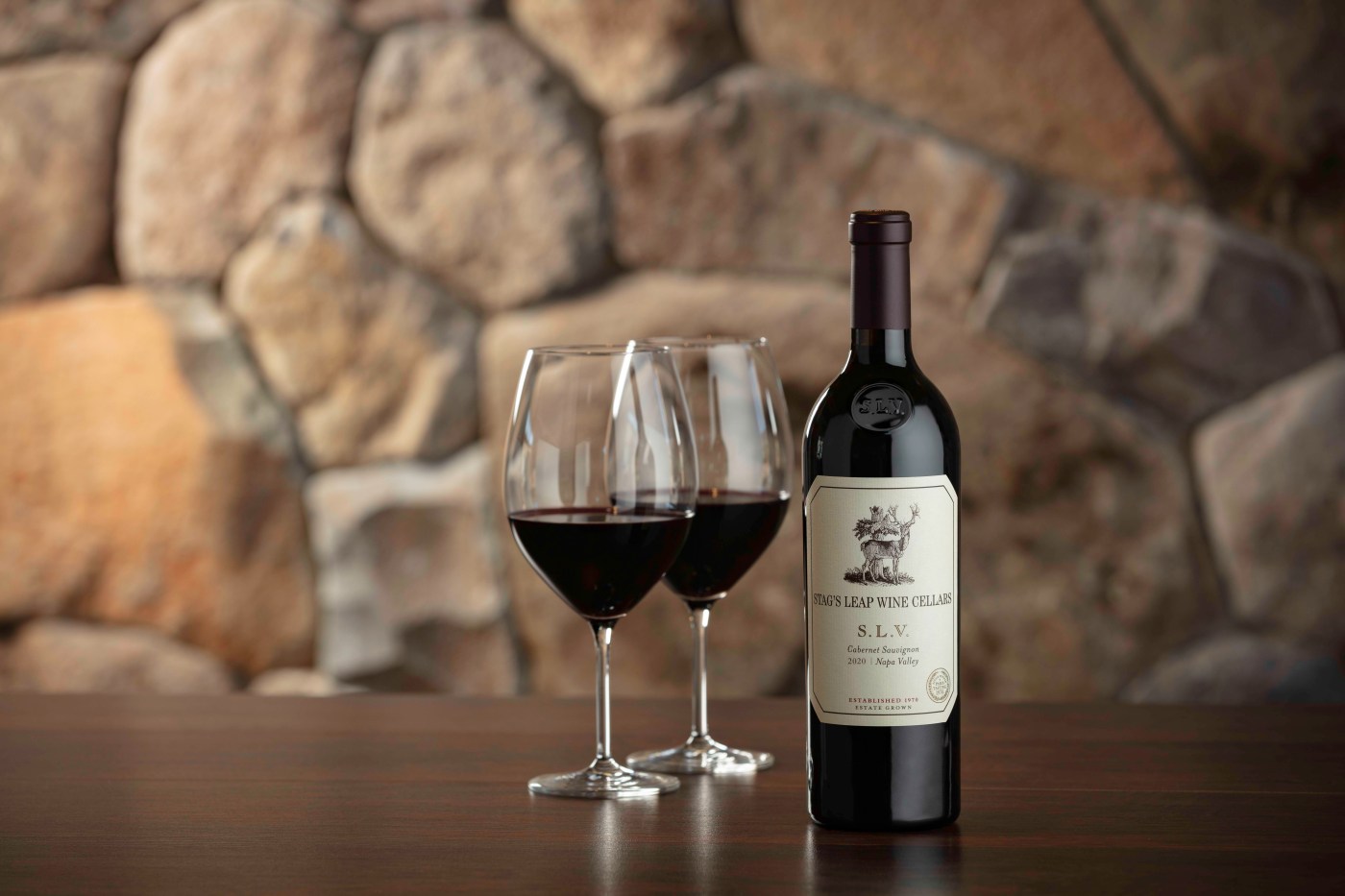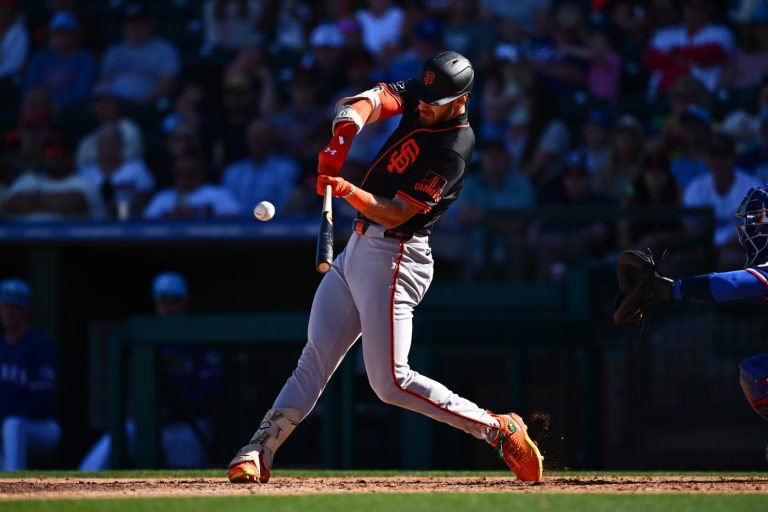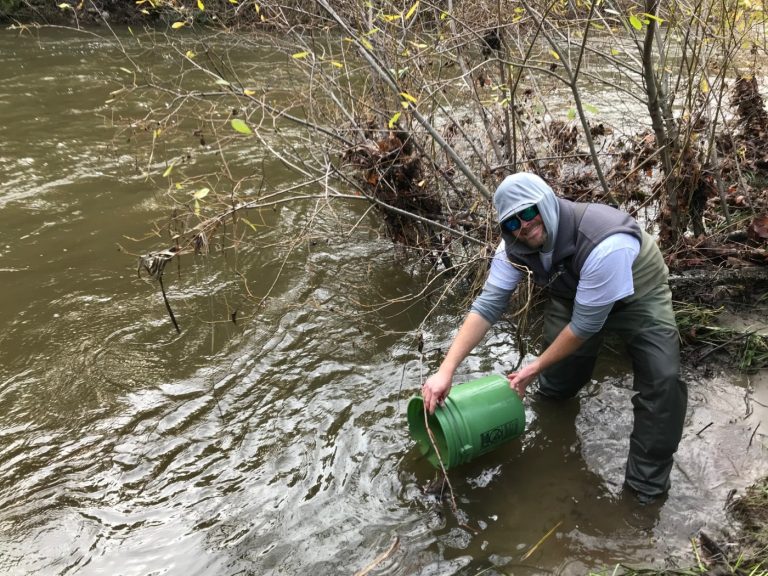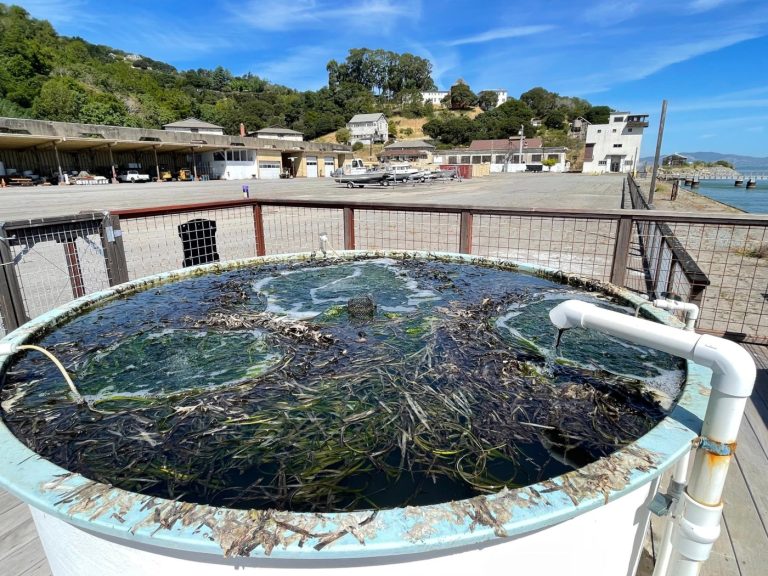By Peg Melnik | Santa Rosa Press-Democrat
Warren Winiarski, the vintner who shocked the world when his Stag’s Leap Wine Cellars California cabernet sauvignon beat the best of Bordeaux in the famed 1976 Judgment of Paris tasting, died June 7. He was 95.
The small-framed man with untamed white hair was soft-spoken, but make no mistake — Winiarski was a tour de force. His indomitable spirit and generosity shaped the course of the wine industry.
The vintner helped his fellow winemakers persevere through the ravages of the California wildfires. With a hefty donation, he spearheaded research for how to best navigate climate change. In addition, Winiarski was instrumental in preserving food and wine history at the Smithsonian Museum in Washington, D.C.
But what Winiarski will be most remembered for among wine-lovers worldwide is this California upstart’s startling win.
The overnight sensation
Winiarski’s cabernet sauvignon that triumphed over the Bordeaux in the Paris tasting was crafted from a converted prune orchard. But perhaps most astonishing to the French judges, steeped in tradition, was that Winiarski’s cabernet was produced from vines that were just 3 years old.
His cabernet made its way to Paris only after a laborious vetting. The late Steven Spurrier, the British organizer of the tasting, first learned about it from the late Robert Finigan, a San Francisco wine writer, who recommended it.
Early in the spring of 1976, Spurrier sent his American partner at the time, Patricia Gallagher, to California to scout the Stag’s Leap Wine Cellars cabernet along with other likely wine prospects.
She visited Napa Valley wineries and made a list. Spurrier flew to California several months later and made his final choices. Winiarski’s cabernet made the cut.
“They were looking for up-and-coming winemakers using new technology on a small scale, craftsman-style winemaking, where the owners were directly involved,” Winiarski said.
The tasting was a stunning upset because two Napa wines were the victors of the blind tasting, beating the best of Bordeaux and Burgundy, based on the scores of nine French judges. The 1973 Stag’s Leap cabernet sauvignon won first place for the reds, while the 1973 Chateau Montelena chardonnay snagged the top prize for the whites.
In the book “Judgment of Paris,” author George Taber captured the distress of the baffled French judges in this heated exchange between Odette Kahn, one of the judges, and Spurrier:
“Monsieur Spurrier, I demand to have my score cards back,” she said.
“I’m sorry Madam but you’re not going to get them back,” he said.
“But they are my scores!” she said.
“No, they are not your scores. They are my scores!” he said.
“Spurrier and Kahn continued the sharp exchanges over ownership” Taber wrote, “until she finally demurred, realizing there was no way to force him to give them to her. Spurrier then shoved the pieces of paper into the hand of his summer intern and told her to take them immediately back to the Academie du Vin (his wine shop).”
The 1973 Stag’s Leap cabernet sauvignon won first place for the reds at a famous tasting in Paris in 1976. (Courtesy of Stag’s Leap Wine Cellars)
Taber was a Time magazine correspondent covering the event, but he said the story of the surprising win wasn’t played prominently in his publication. However, newspapers like The New York Times wrote about the event and word spread about the Franco-American shake-up.
Winiarski learned of his triumph while he was at his old family home in Chicago in June of 1976, settling his mother’s estate. He remembered clearly the phone call from his wife, telling him their wine won the Paris tasting.
“It was underwhelming,” Winiarski said. “I just knew we won a tasting. But the next day I got more information and quickly learned it was something of significance for us and for the American winemaking endeavor.”
While exciting, Winiarski said, the win gave him pause.
“I was more conscious of the standards for me to produce excellent, beautiful wines,” he said. “I realized I had to become more attached and pay attention to every detail.”
Winning made Winiarski grateful for his mentors, Lee Stewart of Napa’s Chateau Souverain and the late Andre Tchelistcheff, best known for defining the style of Napa Valley cabernet sauvignon.
“Lee Stewart taught me that no detail was too small to be ignored,” Winiarski said. “And from Andre Tchelistcheff, I learned the most important thing about wine is its beauty.”
Winiarski’s achievement shifted the tectonic plates in the winemaking world, compelling even naysayers to be curious about California wines, he said. And it gave the upstarts bravado.
“It was an object of pride,” he said. “It was an object of gratitude for the abundance of what this country has to offer. Andre Tchelistcheff said we could make wine in the United States that was doubtless as good as those in Europe. The Paris tasting affirmed that.”
From his earliest days as a winemaker, he wanted to make a difference.
“We must remember that as long as wine is made by humans, it’s a product of the mind. … And the mind supposes a goal and a vision of what those grapes and those tools can get him or her to — the aspiration to bring perfection that they find from their conditions, their tools and their grapes,” he said.
“We’ve learned how to spell,” Winiarski said. “Now, we’re looking to write poetry.”
Navigating climate change
As a man of action, Winiarski knew he couldn’t stand by and watch the wildfires ravage the land he loved without doing something.
With some wineries left in rubble and large swaths of vineyards left charred, a phrase Winiarski heard over and over again resonated with him: “Nature bats last.”
He decided he needed to help wine growers deal with climate change, so they would be able to not only preserve their craft but improve it.
To do that, he settled on what’s known as the Amerine-Winkler Index, developed in the 1940s to classify wine-growing regions based on heat from the sun. It’s sort of a Farmers’ Almanac for winemakers, a scientifically calibrated guide that tells growers what varietals to plant where.
Regions where there are fewer warm days are better suited for early ripening varietals like chardonnays and sauvignon blancs, while areas with more warm days are better for cabernets and syrahs.
Growers rely on the index the way pilots depend on flight plans. But while the climate has changed a lot in the 75 years since A.J. Winkler and Maynard Amerine introduced their index, the scale itself had not.
“It’s time to reassess how much climate change is going to affect grape growing,” Winiarski said in 2021. “We have to develop the method to better discern what is relevant in climate change and what is not.”
Intent on updating the index, Winiarski donated $450,000 to UC Davis. He tapped the university’s expertise, with Elisabeth Forrestel, assistant professor in the department of viticulture and oenology, as the lead researcher.
“The last few years have been a huge wake-up call,” Forrestel said of the effects of climate change, most notably the wildfires and the drought. “It creates a sense of urgency. How much can we learn in as short a period of time to help people cope and manage?”
The goal, she said, is to create guidelines and one could be a recommendation to harvest earlier to protect against wildfires and smoke taint.
“The critical piece is that we have to take adaptive measures,” Forrestel said. “You’re going to take a hit if you do things the way you always have.”
The Atlas Fire was one of more than a dozen blazes that broke out Oct. 8 and 9, 2017, and burned across several Northern California counties. It began on Atlas Peak Road north of the city of Napa, eventually stretching from Lake Berryessa south to the city’s outskirts. Together with the Nuns fire, which began near Sonoma before merging with fires to the east, it incinerated more than 108,000 acres — more than 168 square miles — in the spiritual heart of California’s Wine Country. By the time those two fires were tamed, nine people were dead and nearly 1,500 structures were gone.
Winiarski lost a barn, a house and a cottage at his Arcadia Vineyards in Napa.
Wine grape growing is at a confounding crossroads, he said. The resilient part of him wanted growers to plant, but the scientist in him needed more information. He said an updated index is the map needed to guide exasperated winemakers.
“Everyone is concerned,” he said. “No one is blind to the fact that these things are happening.”
Preserving food and wine history
If wine is bottled poetry, as the late Robert Louis Stevenson surmised, then Warren Winiarski was one of our most prized poets.
Winiarski accrued many accolades over the years and his latest was the inaugural Trustee Medal of Honor from the Julia Child Foundation.
The vintner is credited for bringing the Julia Child Kitchen to the Smithsonian and for making a bequest to endow a curator position for the Food & Wine History Project.
Winiarski’s enthusiasm for preserving food and wine history led a Smithsonian team in 1994 to develop oral histories and videos and collect artifacts for the “Food: Transforming the American Table” exhibition. Still on display today, it includes the vintner’s prized cabernet.
Inside a 20-foot-long glass case sit the two winning wines: the Stag’s Leap Wine Cellars 1973 cabernet sauvignon and the Chateau Montelena 1973 chardonnay. They’re flanked by photos, videos and stories documenting the American winemaking feat.
The two bottles also are chronicled in the book “The Smithsonian’s History of America in 101 Objects.” The author, Richard Kurin, included the bottles as part of a Smithsonian featured object — Julia Child’s kitchen.
Winiarski, who sold Stag’s Leap in 2007 and then owned Napa Valley’s Arcadia Vineyards, said bringing the Julia Child kitchen to the Smithsonian was pivotal in preserving food and wine history.
“It symbolized in a readily accessible way to anyone, the kind of thing that a kitchen represents,” Winiarski said. “Julia Child’s kitchen symbolically is the elevation of food to a status as something more than merely nutrition, something that satisfies another part of our soul.”
Warren’s curiosity — his quest for knowledge — never dimmed in all the years we knew him, said Paula Johnson, now curator of food and wine history for the American History Museum.
One of the most compelling things about Warren, Johnson said, was his quest for perfection in nature. She said he once told someone on his team, “I know you think the grapes are ready to be harvested, but I think let’s wait and see if we can eke out a little more perfection.”
Philosopher to vintner
Winiarski came to his love of winemaking in a roundabout way. He was an instructor of philosophy at the University of Chicago and studied for a year in Italy between 1954 and 1955.
He was abroad to study the political thinker Niccolò Machiavelli, and wine became his muse.
“In Italy, wine was wonderful,” Winiarski said. “It was a daily beverage. It didn’t wait on ceremony. Yet it wasn’t a simple beverage. It had something within its nature that was beautiful.”
He returned to Chicago to complete his master’s degree and began working on his doctorate. But his interest in wine never waned.
When a friend visited with a tasty bottle from an East Coast winery, Winiarski became intrigued with the idea of making great wine in America. He began reading everything he could about winemaking and seeking out knowledgeable mentors.
It took nearly a decade, but finally in 1964 Winiarski broke free from academia and headed west to be a part of this New World winemaking in America.
He and his wife, Barbara, packed up the family station wagon, loaded a trailer full of furniture and books and with their two kids — 1-year-old Stephen in diapers and 4-year-old Kasia — and headed for Napa Valley.
Although he had no formal training, Winiarski was determined to become a winemaker. His only tie to the craft was what he recalled from his childhood. His father made honey wine and dandelion wine at home, which the family drank on special occasions. As a boy, Winiarski would listen to the mysterious sounds of fermentation, with his ear pressed against a barrel.
“I knew I could learn, and I decided to give it everything I had,” he said.
He began as an apprentice working with Lee Stewart of Chateau Souverain, part of a two-man team, and he was known for working long hours with grape-stained hands.
He was the consummate up-and-comer.
In his off hours, he’d rig up wine experiments in a ghost winery. It had no electricity, so he relied on flashlights, candles and lanterns, with bats flying above.
“The bats didn’t seem too interested in what I was doing,” Winiarski said. “I was just disturbing their sleep.”
Winiarski later joined the Robert Mondavi Winery as winemaker from 1966 to 1968, when Michael Mondavi was away at National Guard service.
In 1970, he bought a 50-acre prune orchard for $100,000-plus and converted it to a cabernet sauvignon vineyard. In 1973, he founded Stag’s Leap Wine Cellars and became a winemaker in his own right, an alchemist transforming grapes with surprising results.
“In the Army, they call such a person a mustang, those who come through the ranks and not through West Point,” Winiarski said.
Ever the philosopher
At his Arcadia Vineyards, a spread of 150 acres with 85 planted to vines, Winiarski sat on a bench to put on his brown boots caked in dirt.
He joked that his boots seem as old as his former barn, circa 1890. It’s the one that burned to the ground in the Atlas fire. In its place stands a new barn, equipped with sprinklers to douse the wood building in water to protect it from flying embers.
He said he wanted to give those who have suffered from the California wildfires a chance to rebuild and arm them with a plan to succeed.
Looking back at his new barn, Winiarski was wistful. “I wish we had the old barn, but this one is doing its job. This one was made from a kit. They don’t make old barns anymore.”
He pointed out the gray volcanic ash on his property and said it was great for grooming Cabernet Sauvignon. He picked up a handful, eyeing it with fascination and reverence as if it were an artifact in a museum.
“My property backs into the cone of a prehistoric volcano, Mount George,” he said. “In the book ‘The Winemaker’s Dance,’ it says the area had volcanic activity millions of years ago.”
Winiarski sold his Stag’s Leap Wine Cellars in 2007 for $185 million to Washington’s Chateau Ste. Michelle and the Italian wine company Marchesi Antinori.
Related Articles
Ukrainian winemakers visit Napa Valley to learn how to heal war-ravaged vineyards
Marin-born Springboard Wine expands to spirits
Bouquet of rosés pouring in Los Gatos
Happy Wanderer: Yountville one of the finest Napa wine country towns
David Bruce Winery gifted to Michigan-based Hillsdale College
He bought Arcadia Vineyards a couple years before that to transition into farming. He sold grapes to wineries, most notably to Stag’s Leap, with his fruit making up 20% of its prestigious Artemis cabernet sauvignon.
Winiarski oversaw many goodwill projects. The charitable foundation that bears his name donated $5.1 million to the Providence Queen of the Valley Medical Center in Napa to establish a stroke center.
And as he walked through the vines, the philosopher talked in metaphors, alluding to the seed money he dispersed. His wife died recently, and he knew he wouldn’t be around to see all these seeds grow and prosper. But that didn’t bother him. To make his point, he explained the difference between a leaf, a cane and a seed.
“A leaf lasts one season,” Winiarski said. “A cane lasts many years. But with a seed, the desire is forever. The seed carries that message. Everything is for the sake of the seed.”
(c)2024 The Press Democrat (Santa Rosa, Calif.) Distributed by Tribune Content Agency, LLC.












